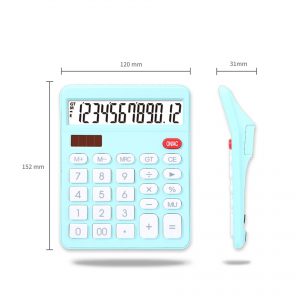The calculator power supply voltage conversion circuit triode BG and the oscillating transformer B, etc. form a typical transformer-reporting oscillating circuit. Transformer B has a total of six windings, of which the 1, 10 and 7.8 end windings are the base and collector windings of BG respectively, that is, the two basic windings that make up the oscillating circuit. The terminal winding is a step-up winding, which obtains a boosted oscillating voltage through electromagnetic induction, which is superimposed with the oscillating voltage of the 1, 10 terminals and added to the diode D, and the capacitor C. In the rectification, filtering and voltage stabilization circuit composed of voltage stabilizer diode DW, etc., take out the stabilized 9 volt voltage at both ends of C. and supply it to ISI. DW not only has the function of stabilizing the output voltage of the 9 volt box, but also a key component for stabilizing the oscillation amplitude and ensuring the stability of the output voltage of each channel. This is because the negative electrode of DW is connected to the base of BG, the bias resistor, etc., so that if the oscillation amplitude becomes larger for some reason, C. The voltage at both ends also wants to rise, but it is restrained by the DW box to make C. The voltage at the terminal cannot be increased, and as a result, the current flowing in the DW increases. The base current becomes smaller. The collector current also decreases, so the oscillation amplitude becomes smaller, which acts as a rubber amplitude.
In the circuit, the windings at terminals 1, 3 and 1, 4 of B are also boost windings. The oscillating voltage output by terminals 1, 3 is rectified and shaken by D, and C, and then about 20 volts are obtained at both ends of C: The dc voltage is supplied to the shank and anode of the fluorescent digital tube; the oscillating voltage output from the 1, 4 terminals is D, rectified by I c, and traveling wave. C: There is a DC voltage of 25-26 volts at both ends. This voltage is also the main voltage used by the LSI. The 5 and 6 terminal windings output an alternating 1.1 volt voltage, which is used as the filament voltage of the digital tube. The 5 and 6 terminal windings have a center tap, which is directly connected to the negative terminal of the 20 volt voltage. To connect is actually to connect the negative terminal of 20 volts to the cathode (ie filament) of the digital tube, so that the cathode potential of the digital tube is fixed, laying a good foundation for normal operation. Capacitor C: is the decoupling capacitor of the power supply. The function is to reduce the AC internal resistance of the power supply to prevent signal loss or mutual interference.














